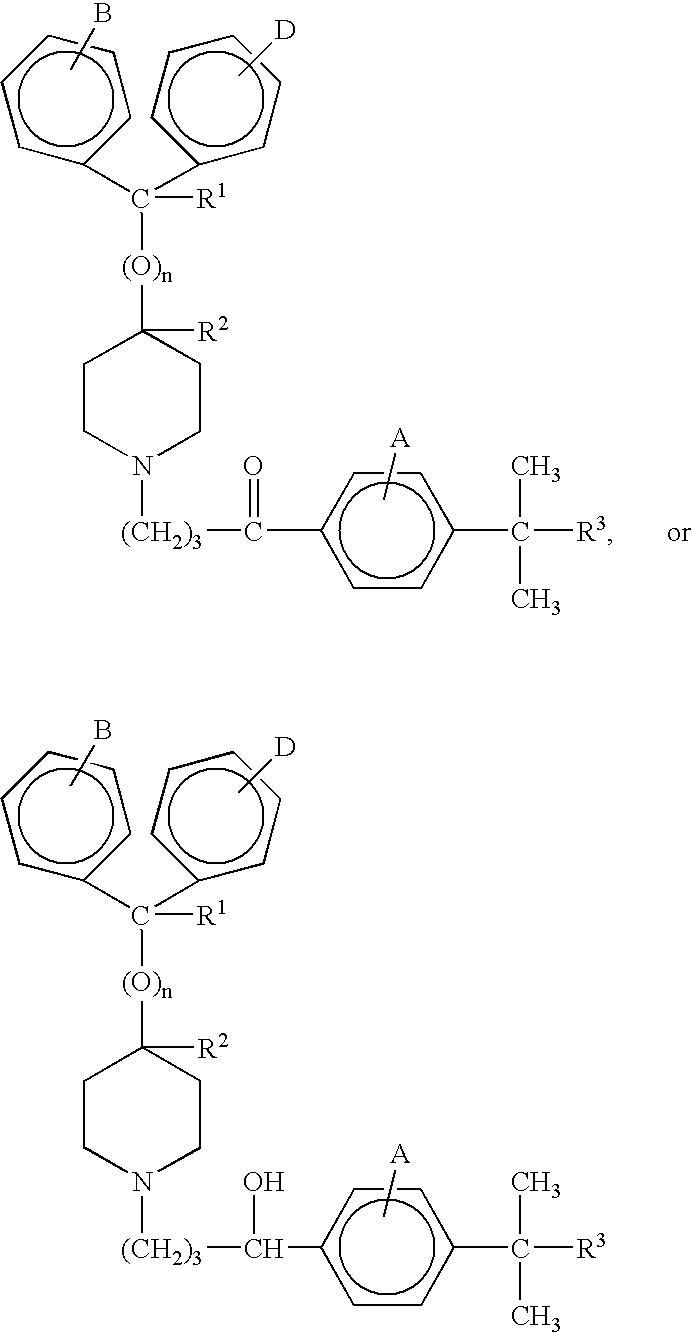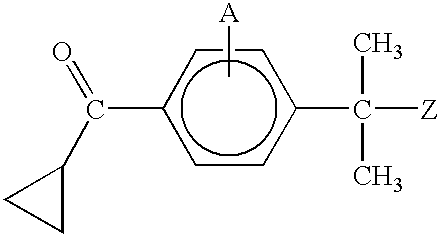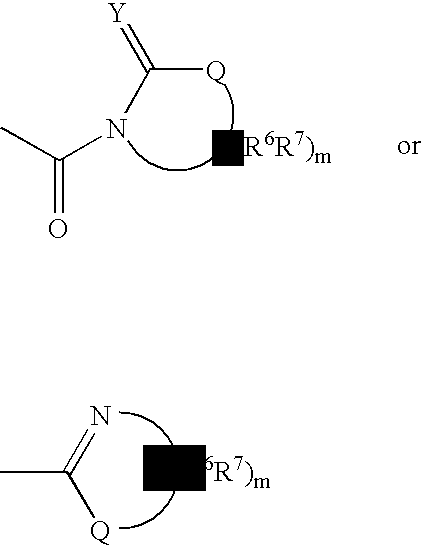Process for production of piperidine derivatives
a technology of piperidine and derivatives, which is applied in the direction of heterocyclic compound active ingredients, drug compositions, immunological disorders, etc., can solve the problems of potentially life-threatening, significant obstacle to the production of piperidine derivatives, and serious side effects seen in some patients
- Summary
- Abstract
- Description
- Claims
- Application Information
AI Technical Summary
Benefits of technology
Problems solved by technology
Method used
Image
Examples
example 1
Preparation of 4-bromo-α-(4,4-dimethylisoxazolin-2-yl)toluene
[0165]A mixture of 4-bromophenylacetic acid (172 g, 0.800 mole), 2-amino-2-methyl-1-propanol (115 mL, 1.20 mole), and 900 mL xylenes were refluxed for 24 hours in an apparatus equipped with a Dean-Stark trap. The mixture was then cooled, filtered, and concentrated to afford a crystalline solid. The solid was slurried in hexanes, and filtered to afford 147 g of a white solid. The hexane filtrate was then concentrated, slurried with hexanes, and filtered to afford another 13 g of 4-bromo-α-(4,4-dimethylisoxazolin-2-yl)toluene as a white solid. The combined yield was 160 g (75%).
example 2
Preparation of 4-bromo-α,α-dimethyl-α-(4,4-dimethylisoxazolin-2-yl)toluene
[0166]A 250 mL three neck round bottomed flask was charged with 5.0 g (0.0186 mole) of 4-bromo-α-(4,4-dimethylisoxazolin-2-yl)toluene, prepared according to Example 1, and 50 mL of dry THF under N2. KHMDS, 27 mL (0.0279 mole, 1.5 eq), was then slowly added over 10 minutes. A color change to deep orange was observed. After stirring the mixture for 15 minutes at room temperature, 1.16 mL (0.0186 mole, 1 equiv.) of methyl iodide was added in one portion. The reaction exothermed to 46° C., and white solid precipitated while the solution retained a pale yellow tint. After stirring for 1 hour, another 27 mL (0.0279 mole, 1.5 equiv.) of KHMDS was added causing the temperature of the reaction to rise from 27° to 30° C. and the color to change to orange. The reaction was stirred for an additional 20 minutes and, thereafter, a second equivalent of CH3I was added. An aliquot was removed, quenched with water, and extracte...
example 3
Preparation of 4-(cyclopropyl-oxo-methyl)-α,α-dimethyl-α-(4,4-dimethyloxozolin-2-yl)toluene
[0167]A solution of 4-bromo-α,α-dimethyl-α-(4,4-dimethylisoxazolin-2-yl)toluene, prepared according to Example 2, (10.0 g. 0.0338 mole) in 400 mL THF was cooled to −78° C., n-butyllithium (16 mL, 0.042 mole) was added via syringe, and the mixture was stirred at −78° C. for 30 minutes. While keeping the temperature below −75° C., N,N-dimethyl cyclopropylcarboxylic acid amide (11.5 g, 0.102 mole) in 30 mL THF was added dropwise, and the mixture was stirred at −78° C. for 30 minutes. The mixture was allowed to warm to −15° C., and was quenched with water. The product was extracted with methylene chloride, washed with saturated NaCl solution, dried over Na2SO4, and concentrated. The residue was cooled to 0° C., treated with minimal acetonitrile, and filtered, to afford 6.95 g of 4-(cyclopropyl-oxo-methyl)-α,α-dimethyl-α-(4,4-dimethyloxozolin-2-yl)toluene as a white solid (72%).
PUM
| Property | Measurement | Unit |
|---|---|---|
| Regioisomer | aaaaa | aaaaa |
Abstract
- n is 0 or 1;
- R1 is hydrogen or hydroxy;
- R2 is hydrogen;
- or, when n is 0, R1 and R2 taken together form a second bond between the carbon atoms bearing R1 and R2, provided that when n is 1, R1 and R2 are each hydrogen;
- R3 is —COOH or —COOR4;
- R4 is an alkyl or aryl moiety;
- A, B, and D are the substituents of their rings, each of which may be different or the same, and are selected from the group consisting of hydrogen, halogens, alkyl, hydroxy, alkoxy, and other substituents,
Description
Claims
Application Information
 Login to View More
Login to View More - R&D
- Intellectual Property
- Life Sciences
- Materials
- Tech Scout
- Unparalleled Data Quality
- Higher Quality Content
- 60% Fewer Hallucinations
Browse by: Latest US Patents, China's latest patents, Technical Efficacy Thesaurus, Application Domain, Technology Topic, Popular Technical Reports.
© 2025 PatSnap. All rights reserved.Legal|Privacy policy|Modern Slavery Act Transparency Statement|Sitemap|About US| Contact US: help@patsnap.com



